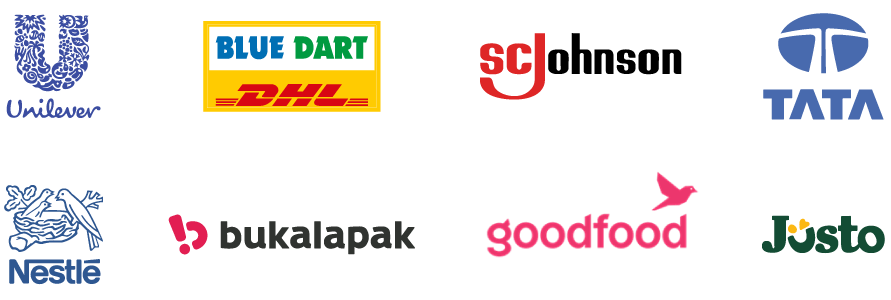- Direct-to-Consumer (D2C) brands are on the rise over the last few years. The COVID-19 pandemic has only accelerated it.
- While traditional retailers scrambled to manage store closures and rebalance inventory, DTCs kept selling online with more than half of survey respondents (52%) experiencing surges in demand. - Forbes, Totem Media study.
- Only 22% of DTC brands surveyed by Totem Media reported sales declines, far fewer than the 80% of larger, traditional retailers that suffered sales dips since the onset of the global health crisis.
Here’s how the D2C business model and traditional retail model differ

Length of the supply chain
| Direct-to-Consumer Business Model | Traditional Retail Business Model |
|---|---|
| Supply chain is shorter in D2C business model with no intermediaries like wholesaler and retailer. It, therefore, reduces the time for the product to reach the customer. | Traditional retail model has intermediaries like wholesalers and retailers. Hence, the supply chain is lengthier. |
Traditional Retail VS Direct-to-Consumer
Traditional Retail

Manufacturer

Wholesaler

Distributor

Retailer

Consumer
Direct-to-Consumer Retail

Manufacturer

Advertising / Website

Consumer

Impact on the relationship with consumers
| Direct-to-Consumer Business Model | Traditional Retail Business Model |
|---|---|
| Brand’s relationship with customers is strengthened as the middlemen are removed. It also boosts long-term customer relationships. | It is tough for brands in the traditional retail model to directly interact with end customers as there are middlemen. |
23% of shoppers said DTC brands offer higher quality products compared to retailers- Retail Dive, 2021

Control over Branding
| Direct-to-Consumer Business Model | Traditional Retail Business Model |
|---|---|
| D2C allows brands to really take their branding to the next level as they are now directly selling to customers. Offers can be given even at an individual level. It provides an enhanced control over the marketing of their products. | Retailers advertise the brand’s products in their stores. Their branding guidelines limit the marketing control of brands. |
The total revenue from DTC sales went up from 49% in 2019 to 64% in 2022 - Statista

Utilizing Digital Space
| Direct-to-Consumer Business Model | Traditional Retail Business Model |
|---|---|
| D2C brands rely heavily on digital traffic to make their sales. Their digital advertising is heavily targeted. | Brands that use a traditional retail model may or may not have an online presence. Majority of their sales happen through store traffic. |
Social commerce sales are said to reach over $2.9 Trillion by 2026 - DTC brands need to ramp up their investments in social channels like FB, instagram and Tiktok to gain more customers and improve revenue. Statista

Pricing Models
| Direct-to-Consumer Business Model | Traditional Retail Business Model |
|---|---|
| D2C Brands usually use a subscription-based pricing for their business. It creates a consistent revenue stream that is focused on customer retention. | Brands using traditional retail models always have an element of uncertainty in gaining consistent revenue. The disconnect with customers can really impact customer retention. |
The Global subscription ecommerce market is set at $161.5 billion as off 2023 and is set to grow to $2419.69 billion by 2028 - Researches and markets.com

Collecting Customer Data
| Direct-to-Consumer Business Model | Traditional Retail Business Model |
|---|---|
| D2C brands can easily analyze data collected through direct sales. This enhances the understanding of the end-to-end customer journey. | It is tougher to collect relevant data. This could impact the brand’s understanding of the customer. |

Personalization
| Direct-to-Consumer Business Model | Traditional Retail Business Model |
|---|---|
| D2C brands can hyper-personalize their products to service various types of customers. | Brands in traditional retail models cater to a mass market. Hence, they cannot focus on personalization of products. |
76% of shoppers recommend and choose brands that provide personalized experience- Mckinsey Research

Identifying unmet customer needs
| Direct-to-Consumer Business Model | Traditional Retail Business Model |
|---|---|
| D2C brands can actually get direct feedback from customers. They can ask shoppers about their unmet needs. | Brands in traditional retail models are not involved in direct sales. Hence, it becomes difficult for them to identify and act upon unmet customer needs. |
82% of manufacturers surveyed said selling directly to consumers improved their customer relationships, and 76% reported that it improved customer experience. Forrester Research.

Profit margins
| Direct-to-Consumer Business Model | Traditional Retail Business Model |
|---|---|
| The lack of middlemen increases the profit margins of D2C brands. It is a cost-efficient and effective way of acquiring customers. | Brands in traditional retail business models incur more costs due to middlemen and their commission. |
27% said they can focus on items that yield the best profitability while letting the manufacturer fulfill orders for lower-volume inventory items. - Forrester Research.
Share this infographic by using this embed code:






